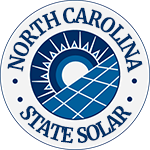North Carolina offers residents and businesses clean energy incentives to install solar panels and invest in clean energy vehicles.
In combination with federal tax credits for green energy, the cost of any new equipment installed can qualify.**
TAX INCENTIVE NOTICE*
**Fraud Alert**
US Green Energy
Click Here to Sign Up for Free Solar Panel Installation
| Schedule | Acceptance Date | Last Day To Register |
|---|---|---|
| Q1 | Monday January 1, 2024 | March 30, 2024 |
| Q2 | Monday April 1, 2024 | June 30, 2024 |
| Q3 | Monday July 1, 2024 | September 30, 2024 |
| Q4 | Tuesday October 1, 2024 | December 30, 2024 |
| Q1 (2025) | Wednesday January 1, 2025 | March 30, 2025 |
Duke Energy
PLEASE NOTE: Beginning in 2025, the federal tax incentives for solar residential installation will be impacted. See the table below for the dates and amounts currently legislated.
**The Federal tax credit is available every year that new equipment is installed.
North Carolina State Capitol
One East Edenton Street
Raleigh, N.C. 27601
(984) 867-8340
[email protected]
Monday-Friday, 9:00 a.m. – 5:00 p.m.
Saturday, 10:00 a.m. – 5:00 p.m.
Duke Energy Carolinas
P.O. Box 70516
Charlotte, NC 28272
(800) 653-5307
Monday-Friday, 8:00 a.m. – 5:00 p.m.
North Carolina Department of Environmental Quality – State Energy Office
217 West Jones Street
Raleigh, NC 27603
(877) 623-6748
[email protected]
Monday-Friday, 9:00 a.m. – 5:00 p.m.
Raleigh Weather Bureau
1005 Capability Drive
Suite 300
Centennial Campus
Raleigh, NC 27606-5226
(919) 326-1042
[email protected]
Hours: Open Daily, 24 hours
Clean Energy and Vehicle Federal Tax Credits
Business Federal Tax Credits
State Tax Credit and Rebate Schedule
| Year | Credit Percentage | Availability |
|---|---|---|
| 2024-2032 | 30% | Individuals who install equipment during the tax year |
| 2033 | 26% | Individuals who install equipment during the tax year |
| 2034 | 22% | Individuals who install equipment during the tax year |
| Property Tax Exemption | 100% of added property value | Individuals who install a renewable energy system |
If you have determined that you are eligible for the green energy credit, complete Form 5695 and attach to your federal tax return (Form 1040 or Form 1040NR).
IRS Form 5695
Instructions
Future Due Dates and Basics
Office of Energy Efficiency & Renewable Energy
Forrestal Building
1000 Independence Avenue, SW
Washington, DC 20585
RESIDENTIAL CLEAN ENERGY TAX CREDIT
North Carolina Clean Energy Program
Account Management
Billing & Payment Options
Home Improvement Rebates
Savings & Solutions
Outages
Contact
Power Outage Map
Department of Administration
Phone: (984) 236-0033
Email: [email protected]
Monday – Friday
9 AM – 5 PM
325 N. Salisbury Street
Raleigh, NC 27603
The ease with which solar panels are being accepted and installed in North Carolina may be down to the hours of daily sunshine bathing the state, rather than the limited North Carolina solar incentives currently available.
This comprehensive guide outlines the North Carolina solar incentives available for residents who want to reduce the cost of home solar installation.
Solar Credits That Apply in North Carolina
It’s never too late to adopt solar energy as your primary energy source, especially if you long to sever the link to the main grid system and significantly reduce your energy costs at the same time.
An initiative that offers tax deductions for solar panels is one of the best federal and North Carolina solar incentives introduced to encourage homeowners to have PV panels installed in their homes.
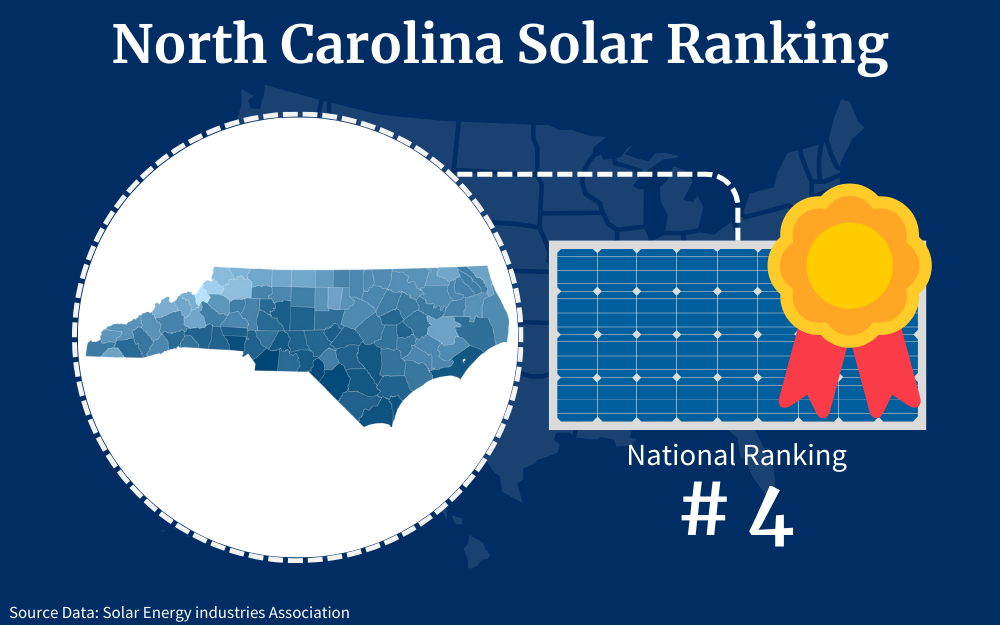
The ITC tax credit is the most innovative and since its launch in 2005 has persuaded countless customers who were not only straddling the fence of indecision but whose budgets couldn’t stretch to fully purchase a photovoltaic system.
So how does it work?
The scheme is open to all property owners who are also taxpayers, not just in North Carolina, but in every state across the country, and makes available a 30% tax break that can be claimed against the cost of solar installations, complementing other North Carolina solar incentives.
The property itself can be a houseboat or even a mobile home as long as it is situated in the United States and is classed as the primary residence of the registered owner.
To apply for it, IRS Form 5695 has to be completed and submitted with your tax returns for that year.9 It is available online on the IRS website and there are even instructions on how to fill it out.
On the form, you need to include:
- Your property details
- The details of your installer
- Where the system is installed on your property
- The kWh and the total components of the system
- Total cost of the system
- Amount of discount expected
- Your taxes that are due for that year
After filling out the form, you need to:
- Transfer the Credit to Your Tax Return: Depending on your tax situation, you may need to transfer the credit amount from Form 5695 to your main tax return (e.g., Form 1040).10
- File Your Tax Return: Attach Form 5695 to your federal tax return when you file it.
- Keep Records: Keep copies of all relevant documentation and receipts in case of an audit.
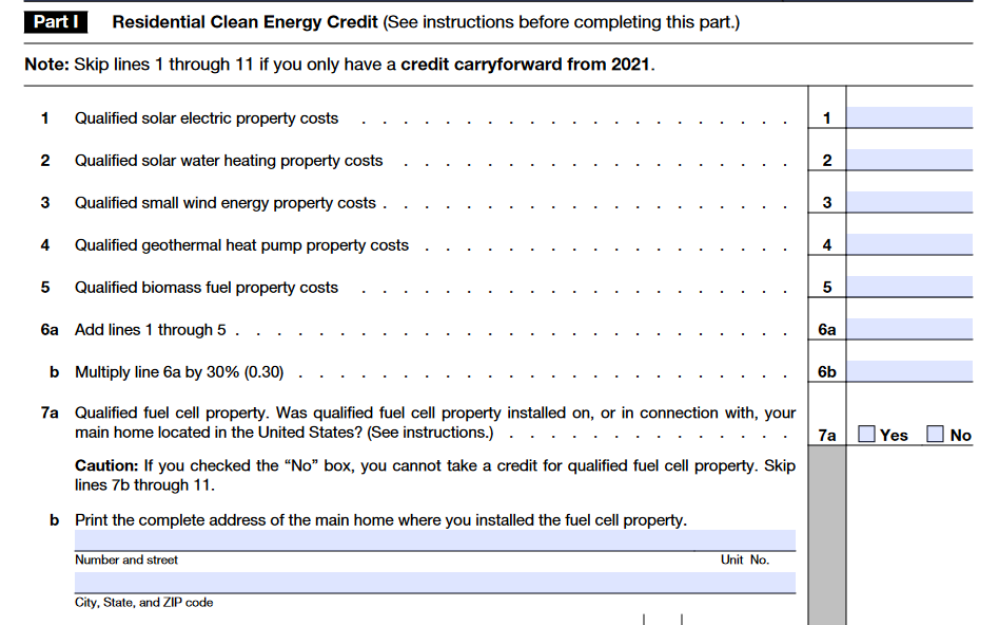
The cost of solar panels in North Carolina on average is about $18,000, before the Federal 30% clean energy credit is subtracted.1 Once that is deducted, the price will be reduced to $12,600, which is quite a saving.
You won’t, however, be getting a check in the post.
To qualify for the ITC tax credit, the complete system has to be paid for upfront in cash or with a loan and already installed in your property. That’s one of the prerequisites, as the credit cannot be claimed before the system is bolted in place on your rooftop or elsewhere on your property.
The $5,400 discounted from the sales price of the PV system and now available to be claimed as a tax credit, is to be levied against your taxes that are due in that first year of installation.
If your taxes due for that year are $1,000, that amount will be deducted from the credit of $5,400 you have been awarded. Consequently, you will have no taxes to pay for that year and the balance of $4,400 will be carried over to the next year when your taxes are due.
You will have 5 years to claim the entire amount after the first submission. At the end of the final year, if there is any balance remaining it will not be able to be claimed and will be lost to you.
The ITC is not just a residential solar credit. It is open to commercial enterprises as well and has proven to be so successful that when it was announced that the program was due to come to an end in 2022, an extension was granted by President Joe Biden in the Inflation Reduction Act.
The new expiry date was delayed until 2035.
Renewable Solar Energy Credits From the Government (How To Qualify for North Carolina Solar Rebates and Credits)
There are no solar energy credits in North Carolina that apply to the entire state, unfortunately, apart from the ITC.
Originally it was called the Solar Investment Tax Credit and even though it offered a 30% tax credit it was capped at a maximum amount of $2,000 during its initial introduction.
That cap was removed in 2008 by the Obama administration so there was no ceiling to what could be claimed in an effort to incentivize more homeowners to install solar systems.
After that adjustment, it came close to being terminated multiple times but was thankfully extended every time.
Now called the Residential Clean Energy Credit, the 30% credit is due to be downgraded to 26% in 2033, then reduced again to 22% in 2034.
Hopefully, the end date of 2035 will be extended again, but in the meantime, residents of North Carolina are still able to take advantage of it as well as any regional solar energy credits or rebates on offer from local utility companies.
And considering that there are over 100 utility providers, there are sure to be regular solar promotions waiting to be snapped up.
North Carolina Duke Energy Solar Rebate Program
Only available in North Carolina despite the fact that Duke Energy serves numerous other states, residential, business, and charitable users all benefit from its Solar Rebate Program.11
In conjunction with environmentalists, the energy company has made a firm commitment to this program to facilitate the conversion to green power easier and cheaper for residents in the state, as long as they qualify.2
- The applicant has to be a customer of the company.
- To be eligible, an authorized solar installer from their internal list has to be contracted for the installation.
- The value of the rebate is based on a per-watt basis.
If a customer installs a 7,500-watt system (7.5 kWh), they will get a rebate of $0.50 per watt. That equates to a discount of $3,750 straight off the top of the price. - There is a limit of $6,000 that can be claimed.
- Commercial clients get $0.30 per watt, limited at $30,000.
- Nonprofit users can get $0.75 per watt, limited to $75,000.
So popular is the program that there is occasionally a waiting list, but the savings are worth the wait.
Applying on the company website is extremely easy.
Piedmont Electric Membership Corporation (PEMC) Energy Efficiency and Renewable Energy Loan Program
Not all installations in North Carolina are going to cost $18,000.
Some may cost a lot less but still be out of the financial reach of thousands of interested parties.
The scheme is open to qualified customers of PEMC. If eligible, they can apply for a loan of up to $10,000 through their Energy Efficiency and Renewable Energy Loan Program.12
The term of the agreement can be as long as 7 years with an interest rate of 5% for the purchase and installation of photovoltaic panels. Inquiries can be made to PEMC.
Solar Energy Electric System Property Tax Exemption or Exclusion
In August 2008, a photovoltaic system installed in North Carolina was free from property taxation up to a level of 80% of its assessed value. Since that date, the amount has been increased to 100% for installations on residential properties but remains the same for non-residential premises.

Considering that the typical house in North Carolina has a value of $320,922 and that a new solar installation generally raises the valuation by approximately 4%, that would increase the value of your house by $12,800 to $333,722.
Property taxes for the state are 0.70%.
$333.722 X 0.70% = $2,336.054 to be paid in property taxes
$320.922 X 0.70% = $2,246.454 to be paid in property taxes
That equates to a saving of $89.60, and over the lifetime of your solar panels can mean a saving of $2,240.
You are able to register and apply on the North Carolina Department of Revenue website. Once there, just follow the instructions on how to fill out the form.3
Home Solar Installation Expenses and Materials
Rooftop solar panels for home installation projects include more than just the solar cells themselves, and some contracts require more equipment than others to complete the installation process.
Beyond the main components, auxiliary items are needed to properly secure the panels to the rooftop, all contributing to the overall solar panels sustainability.
The main parts are:
- The solar cells
- The aluminum frame
- A back sheet for the solar panels
- A junction box
- An inverter
- A charge controller
- A battery bank
- A racking system to mount the solar panels
To secure the racking frame to the roof, aluminum or steel roof anchors will be needed along with a special key lock system connecting the roof to the frame. The mounting frame uses bolts to clamp it to the solar modules to ensure they will not take off in the next stiff breeze and to stop your $18,000 investment from disappearing over the far horizon.
Installing solar panels requires a certain level of expertise to calculate the correct angle to capture the maximum amount of daily sunshine, and to secure them to the roof where they will possibly reside for the next 25 years.
Solar Calculator: How Much Can You Save?
The size of your solar system, how much energy you use,4 and the price of electricity in your area all affect how much money you will save. Statistics on the average amount of money saved by switching to solar power do not account for these factors.
When we talk about saving money with solar power, what we’re actually talking about is the avoided energy costs or the amount of money you would have paid on your electric utility bill had you not chosen to install solar panels in your home.
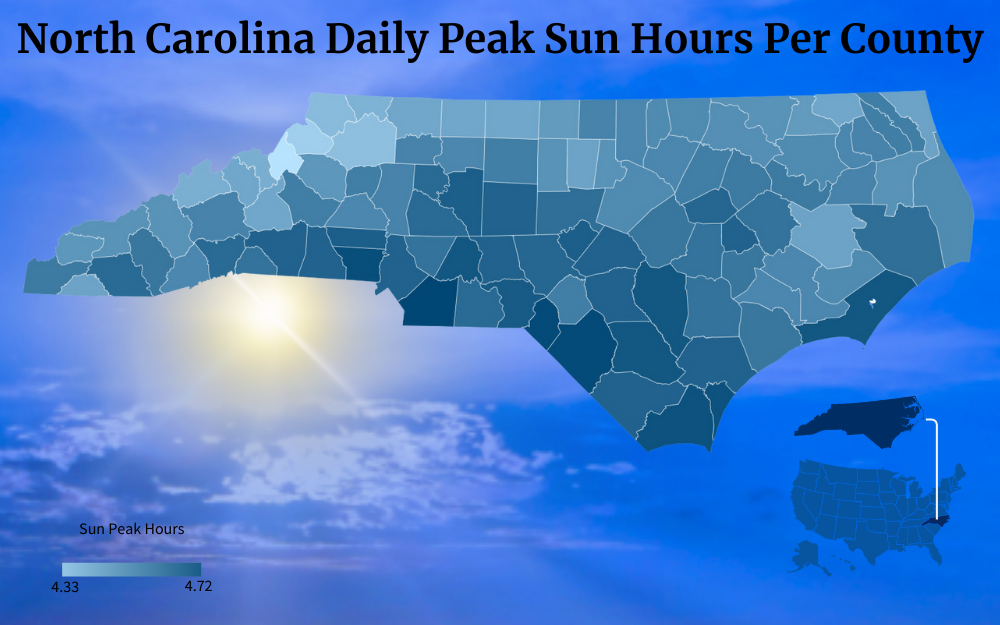
The average annual electricity consumption for a U.S. residential utility customer is 10,715 kilowatt hours (kWh) per year, which is an average of about 892 kWh per month. When you multiply that by the national average electricity rate of $0.14 per kWh, you’ll find that the typical American family has a monthly electric bill of around $125.
With sufficient solar arrays installed to meet those energy demands, annual savings could be as high as $1,300 to $1,500. North Carolina is fractionally higher than the national average with a monthly electricity usage of 1,148, 13,776 per year, and a rate of 13c /kWh.
If the solar installation completely replaced the electricity from the grid, a saving of $1,790.88 would be realized every year. To calculate how many panels would be needed, just follow the formula below, using the average daily peak sun hours in North Carolina of 4.5 hours, and the average solar panel size of 400 kWh.
At the end of the calculation, add an additional 25% to cater for any discrepancies in the performance of the solar panel in a real-world situation rather than the factory rating which was established under constantly perfect conditions where cloud cover doesn’t exist.
Multiply 4.5 X 30 for the monthly peak sun hours = 135
1,148 / 135 = 8.5 kWh system
8.5 X 1,000 = 8,500 watts
8,500 / 400 = 21 solar panels
21 X 25% = 26 solar panels
A residential solar power calculator is one of the most convenient methods to estimate the amount of panels for your household energy needs, and also to calculate your potential savings from installing solar panels. If after all the calculating and number crunching, you simply can’t afford to buy solar panels for property, there are still some options that you can explore.
How Can I Sell Power to North Carolina?
Everyone likes to make a saving. The route to saving on upfront costs of purchasing a solar system is a narrow one as the amount of solar modules needed reflects the amount of electricity needed.
If you can significantly reduce your electricity consumption by swapping out high-energy appliances and doing more energy-intensive chores like cooking and washing during off-peak hours, then you can reduce the price somewhat. Another option is to completely get rid of the expensive battery bank used for storing excess energy, and save up to $4,000 or more.
But something would have to replace that system of storing excess energy for use at other times when power is needed but not being generated by the rooftop PV system. And this is where net metering comes in.5
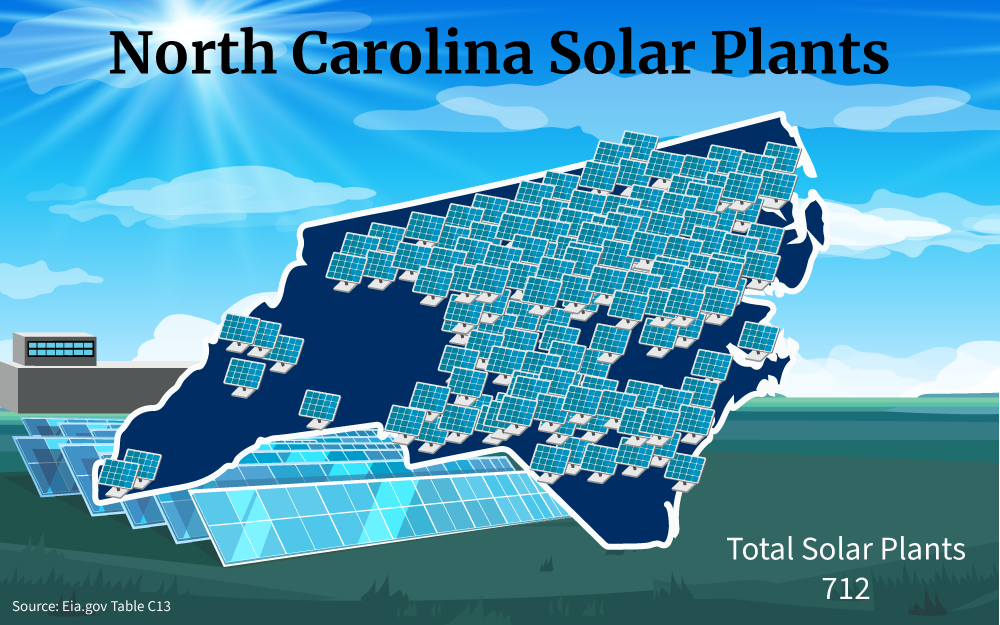
Selling solar power to generate income back to the utility grid in North Carolina is not a possibility through this grid-connected system, but it will store the excess energy from your home as credits which you can then access as and when needed. But there is a change coming to North Carolina.
September 30, 2023, heralds the end of the home net metering rider (Rider NM) program and it will no longer be available to new consumers. Established homeowners will have until December 31, 2026, when they will be automatically upgraded to Rider NMB.
The new net metering rider is called Rider RSC, (Rider Solar Choice), and the Net Metering Bridge (Rider NMB). Customers must agree to a Time-of-Use system where like-for-like electricity tariffs are exchanged.
Previously, excess energy that was generated during off-peak times and sent to the grid was lumped together with normal tariff rates when they were returned to the homeowner. This benefitted the property owner but not the supplier as they were giving away cheaper electricity in times of more expensive peak demand.
This imbalance has been redressed under Rider NMB and the Time of Use (ToU) system. A bi-directional meter calculates minute by minute what times electricity is generated by your rooftop PV system, how much is consumed, and how many unused kWhs are credited under which tariffs.
The smart meter then automatically calculates the prices of the normal rates against off-peak rates to finally determine what you will owe on your utility bill at the end of the month.
Contractor Requirements for Home Solar System Installation
Buying solar panels for house electricity independence is a big investment for any homeowner, regardless of whether the amount is $15,000 or $50,000 so it is imperative that you fully research which solar company to hire. When you hire a solar company, ensure that the installers are fully certified and experienced and that the company has a reputable track record.
You have to ask yourself, what happens to solar panels after 25 years, and will the company still be around to service your equipment?
- At least 3 separate quotes should be gathered to compare prices and quality of the equipment.
- Ask how long the company has been trading for.
- Always ask for references so you can visit previous installations in your area that have been installed for a while.
- A knowledgeable contractor will be able to advise you of all tax credits, rebate programs, and initiatives available in the area.
- Scrutinize the small print on the warranty to guarantee the quality of after-sales service.
- Enquire if they provide financing or a PPA scheme.6
A Power Purchase Agreement has the potential to save you a lot of money as the entire system including installation can be supplied by the company. A long-term contract would have to be signed with a small upfront deposit, or even none at all.
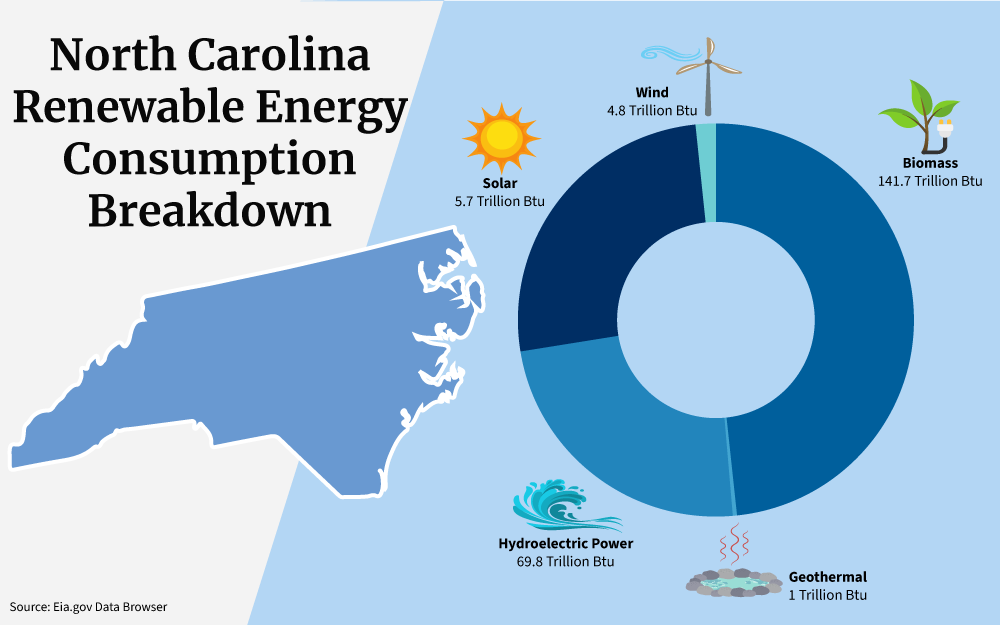
Under the agreement, the system will be owned and serviced by the company and operated through the net metering process. The electricity rate for your property is negotiated between you and the contractor so your bills will be cheaper.
The company gains a customer, benefits from the tax credits, and rebates, and also earns from a special rate from the utility provider. You, the customer, gain a PV system with maybe a small deposit instead of a large initial outlay, and cheaper utility bills.
At the end of the 10 or 20-year contract, you will have the option of purchasing the system at a reduced price or continuing with a renewed contract.
Although not as beneficial as owning the entire system, a PPA is a gateway for those homeowners who find the initial cost of a PV system unaffordable. They have assisted numerous low-income families in adopting solar energy and saving thousands at the same time.
Solar Energy Facts in North Carolina
In 2022, North Carolina was ranked in position number 16 in terms of the installation of solar power. Barely a year later, the state jumped to number 4 on the list.
This was achievable in such a short space of time because of the recent introduction of the state’s Renewable Energy and Energy Efficiency Portfolio Standard (REPS) which encouraged electricity providers to increase the amount of energy they delivered came from renewable resources.
Coupled with this 2017 law, was the uptake in solar leasing.
The state reasoned that more consumers would be likely to install and rely on solar power as their source of energy if being able to afford to have the system installed in their home was made easier and more affordable.
So what other solar energy facts in North Carolina should you know?
- The state has nearly 8,500 MW of power available for use.
- Over 1 million homes can be powered by this amount of MW.
- Approximately 43,000 properties have solar panels installed.
- 9% of all the electricity in NC comes from solar power.
- There are 240 solar companies operating across the state.
- $11.3 billion has been invested to date in the industry.
- More than 7,000 jobs are connected to the industry.
- North Carolina has several independent large-scale solar farms constructed by entrepreneurial developers.7 Albermarle Beach Solar and Fern Solar have the capacity to generate electricity for 18,000 and 16,000 homes respectively.
- The first solar farm came into operation in 2008. Since then nearly 700 facilities have come online in the state with the capacity to generate 5,000 MW.
- Smaller community solar projects have also been developed between municipalities to take advantage of solar power to reduce energy bills in the area of installation.
- The payback period for an installed PV system is between 9 to 12 years.
- It has been estimated that over the lifespan of a solar system, between $16,000 to $22,000 can be saved by residents.
The landscape for solar generation is going to continue to be a positive one for the foreseeable future.
Declining costs, improvements in solar technologies, and the introduction of new initiatives, including North Carolina solar incentives are going to ensure that the state remains a leader when it comes to generating electricity from such a powerful source of sustainable energy as the sun.
Frequently Asked Questions About North Carolina Solar Incentives
Are Solar Panels Worth It in North Carolina?
There are no negative effects of solar panels by installing them in North Carolina. The Tar Heel State has a high level of sun exposure, good net metering, municipal and utility incentives, and the federal tax credit which makes solar panels worth it in North Carolina.
What Do Solar Panels Do?
Solar panels are made from silicon and other semiconductor materials which generate an electric charge when exposed to sunlight. Internal wiring converts this light to an electrical direct current (DC),8 and then an inverter changes it into an alternating current (AC)for use in your home and that answers the question, “what do solar panels do?”
What Is the Basis of the Rating of Solar Panels’ Sustainability?
The solar panels’ sustainability credentials are based on how they are a renewable and clean energy source. They reduce the reliance on burning fossil fuels for electricity, mitigate the carbon footprints stomping across the planet, and help to lower the accumulation of greenhouse gases in America and worldwide.
References
1U.S. Internal Revenue Service. (2023, August 28). Residential Clean Energy Credit. IRS. Retrieved September 1, 2023, from <https://www.irs.gov/credits-deductions/residential-clean-energy-credit>
2University of Memphis. (2023, May 11). What is Green Power? The University of Memphis. Retrieved September 1, 2023, from <https://www.memphis.edu/bluegoesgreen/power.php>
3North Carolina Department of Revenue. (2022, December 28). Order Certain Tax Forms and Instructions. NCDOR. Retrieved September 1, 2023, from <https://www.ncdor.gov/taxes-forms/order-certain-tax-forms-and-instructions>
4U.S. Department of Energy. (2023). Estimating Appliance and Home Electronic Energy Use. Energy Saver. Retrieved September 1, 2023, from <https://www.energy.gov/energysaver/estimating-appliance-and-home-electronic-energy-use>
5North Carolina Utilities Commission. (2023). Net Metering. Public Staff | North Carolina Utilities Commission. Retrieved September 1, 2023, from <https://publicstaff.nc.gov/electric/net-metering>
6U.S. Environmental Protection Agency. (2022, November 21). Physical PPA. EPA. Retrieved September 1, 2023, from <https://www.epa.gov/green-power-markets/physical-ppa>
7Brockett, D. (2023, March 9). Landowner Leasing for Utility Scale Solar Farms. Penn State Extension. Retrieved September 1, 2023, from <https://extension.psu.edu/landowner-leasing-for-utility-scale-solar-farms>
8Earley, E. (2013, September 17). What’s the difference between AC and DC? MIT | School of Engineering. Retrieved September 1, 2023, from <https://engineering.mit.edu/engage/ask-an-engineer/whats-the-difference-between-ac-and-dc/>
9Internal Revenue Service. (2023). Form 5695. IRS. Retrieved September 14, 2023, from <https://www.irs.gov/pub/irs-pdf/f5695.pdf>
10Internal Revenue Service. (2023). Form 1040. IRS. Retrieved September 14, 2023, from <https://www.irs.gov/pub/irs-pdf/f1040.pdf>
11Duke Energy Corporation. (2023). NC Solar Rebate Program. Duke Energy. Retrieved September 14, 2023, from <https://www.duke-energy.com/home/products/renewable-energy/nc-solar-rebates?jur=NC01>
12Piedmont Electric Cooperative. (2023). Home Upgrade Loans. Piedmont Electric Cooperative. Retrieved September 14, 2023, from <https://pemc.coop/smart_energy/loan-program/>
13Photo by Ethan Howard. Unsplash. Retrieved from <https://unsplash.com/photos/M9lkM4SVHEA>
